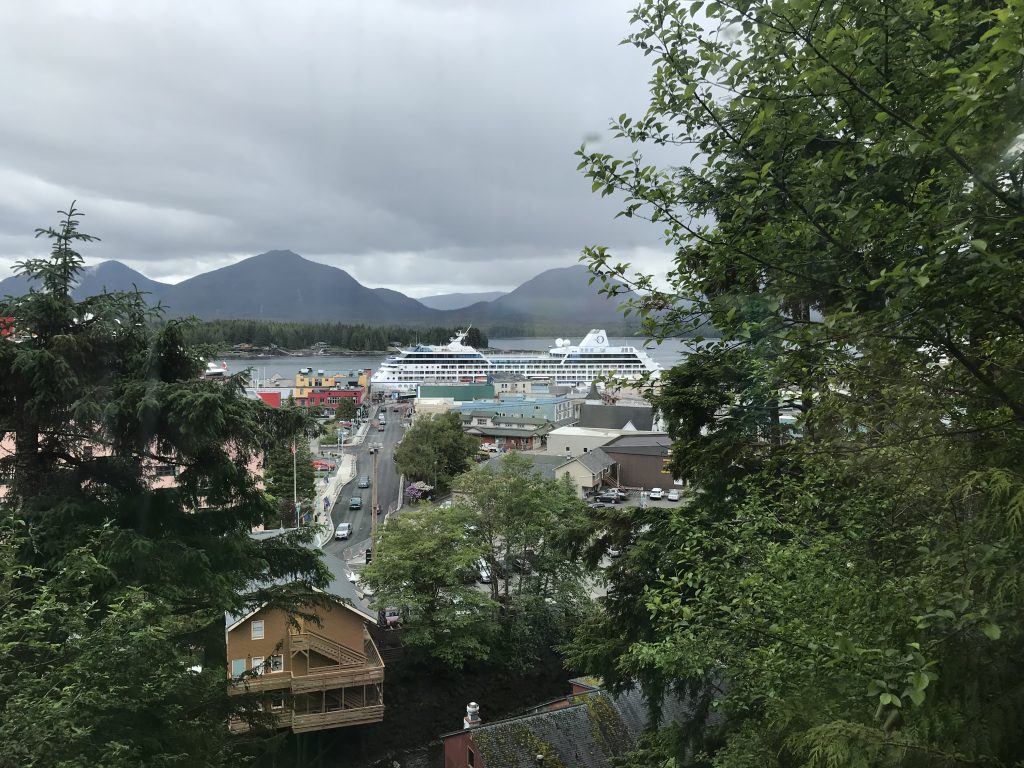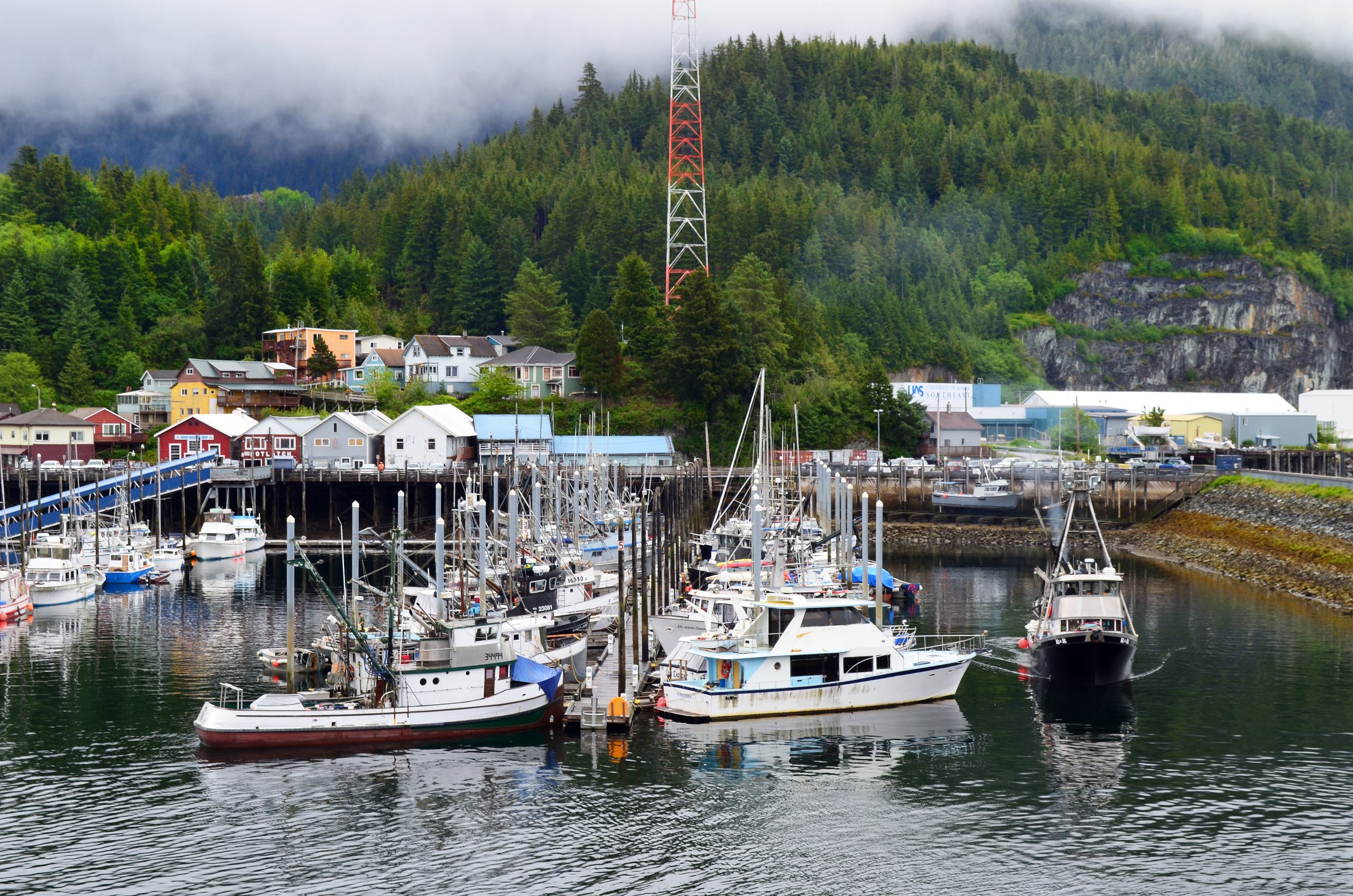Ketchikan was my favorite port of call in Alaska and if you’re looking for Native American totem poles, this is the place. Additionally, the Tongass National Forest surrounds the town that is only 6 square miles.
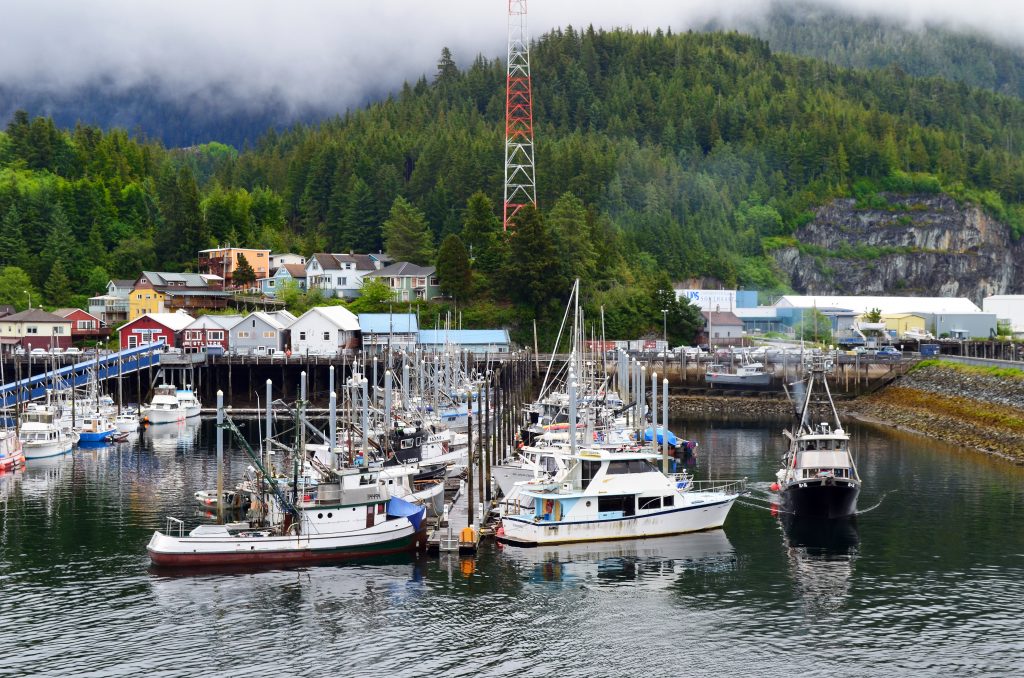
The town is also famous for the millions of adult salmon returning upstream to spawn during the summer months. King, Silver, Sockeye, Chum and Pink Salmon arrive during the annual salmon run to the delight of fishermen who have dubbed the town as “The Salmon Capital of the World.”
Totem Bight State Park
My husband and one daughter wanted to tour Totem Bight State Historical Park about 10 miles west of town. They took the Blue Line public bus which stops directly in front of the park. Return buses depart every hour and the trips cost $2.00 round-trip.
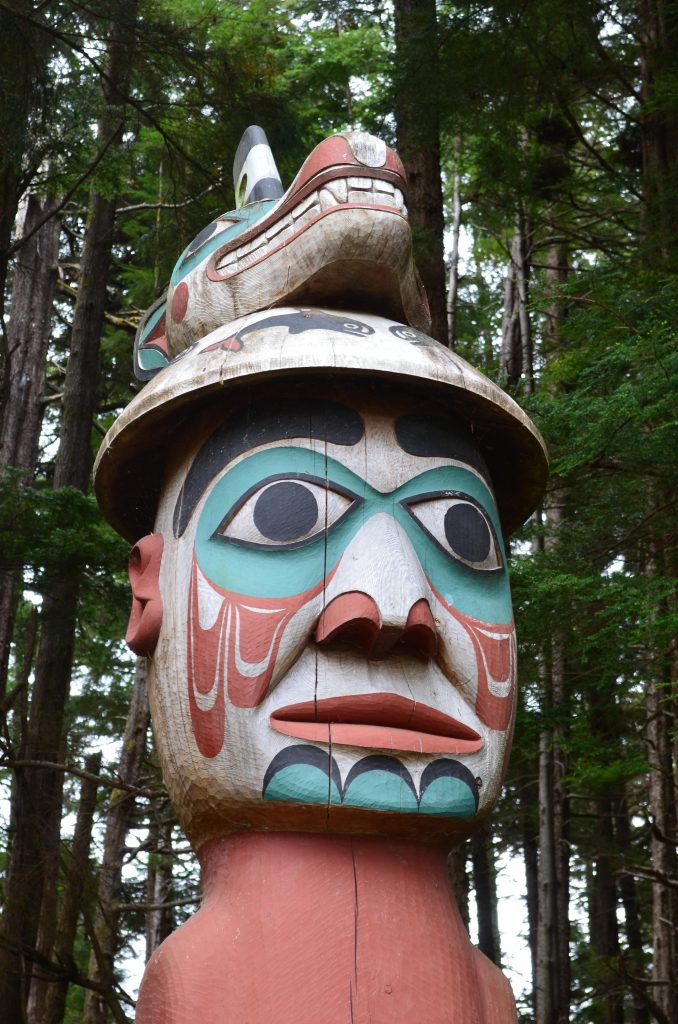
Totem poles aren’t meant to last forever due to exposure from the outside elements. Over time, residents watched helplessly as historical poles deteriorated. Wanting to preserve the past, the government hired workers from the Civilian Conservation Corps (CCC) in the 1930s to replicate these structures and placed them at Bight.
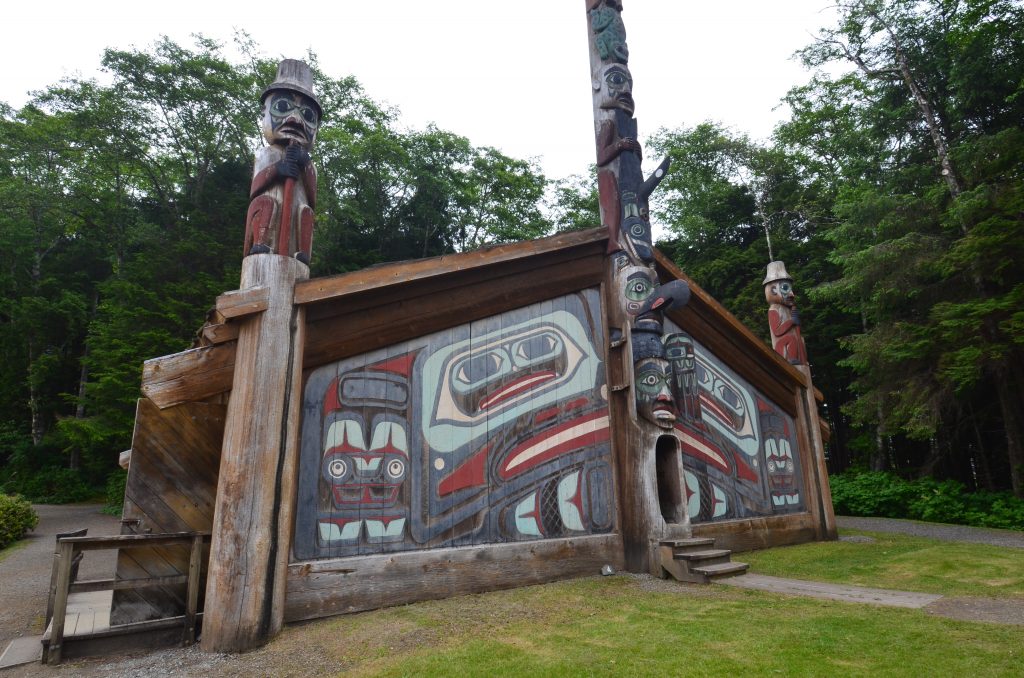
Downtown
With a map in hand, we could walk almost everywhere. But Ketchikan also offers a free shuttle service that makes a loop past major points of interest as well.
Creek Street
We headed to Historic Creek Street first. Located along Ketchikan Creek, all the wooden buildings perched on timber poles look somewhat rickety. But they’re not – they’ve been around since 1903.
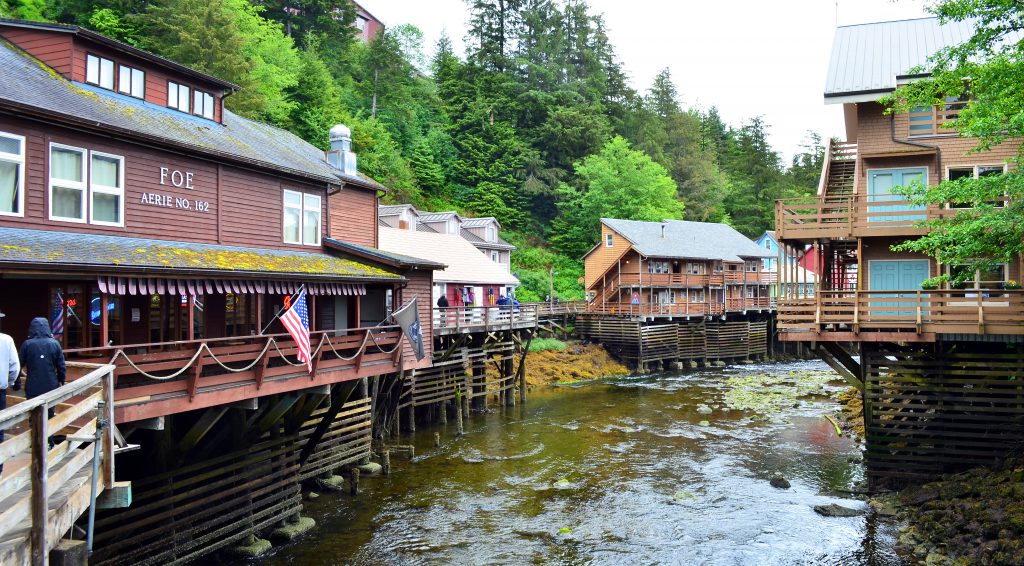
Beginning in 1886, several canneries opened in the fishing town and with that came brothels and bars. Known as the Red Light District up until the 1950s, Creek Street now offers shopping featuring Alaskan-made products.
However, one brothel remains — as a museum. Dolly’s House sports the slogan, “Where both men and salmon came upstream to spawn” on the side of the pastel-green house and features the abode of the infamous Dolly Arthur.
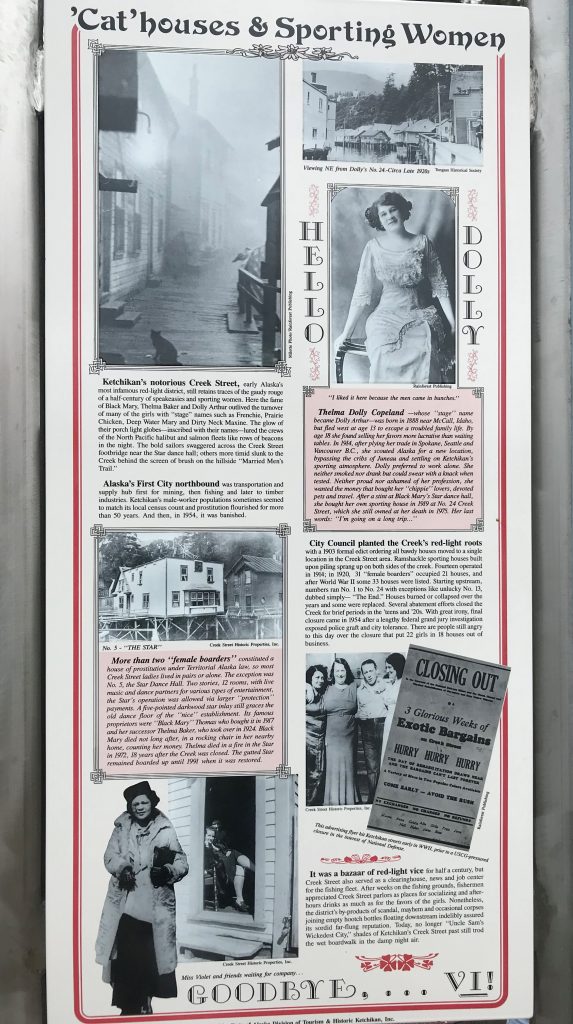
At the other end of Creek Street, we took a funicular up to the Cape Fox Lodge. Glass cases inside the lobby showed basketry items made by Tlingit women. They wove the baskets so tight and sturdy, they could carry water.

Instead of taking the funicular back down, we descended down a circuitous set of wooden stairs amidst a forest-like setting. This path, called Married Men’s Way, allowed the men to sneak from their homes down to the brothels and bars below without being seen.
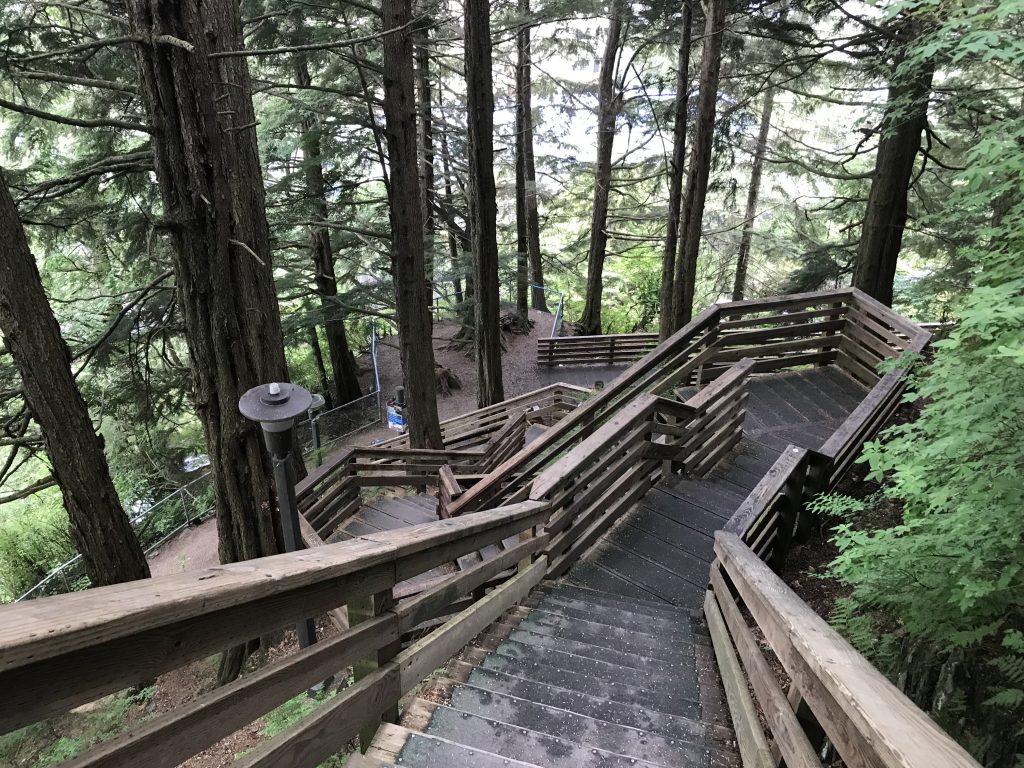
Stedman-Thomas National Historic District
Although a beautiful place, segregation was alive and well during the town’s early days. Continuing on our walk a bit further east, we entered the Stedman-Thomas National Historic District. The Tlingit people originally settled in this fishing area calling it Indian Town. However, an influx of foreigners, attracted by employment at the canneries, settled in the area around the early 1900s.
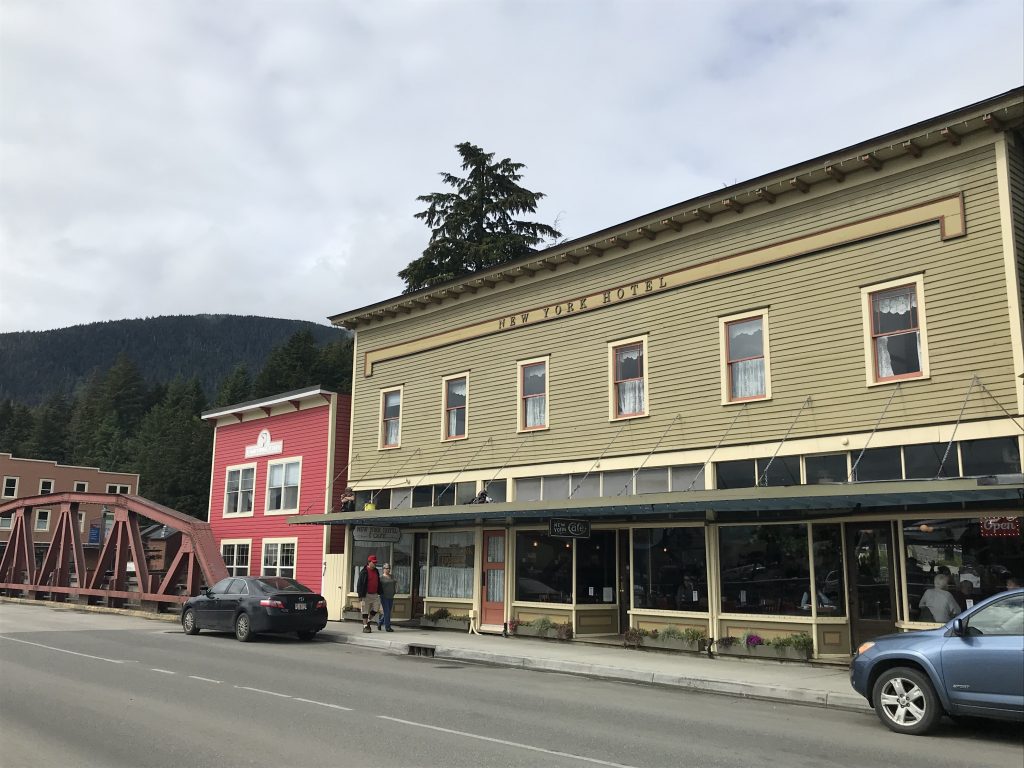
Unfortunately, many of the Japanese-American residents, including the Shimizu family who owned the New York Hotel, were relocated to internment camps during WWII.
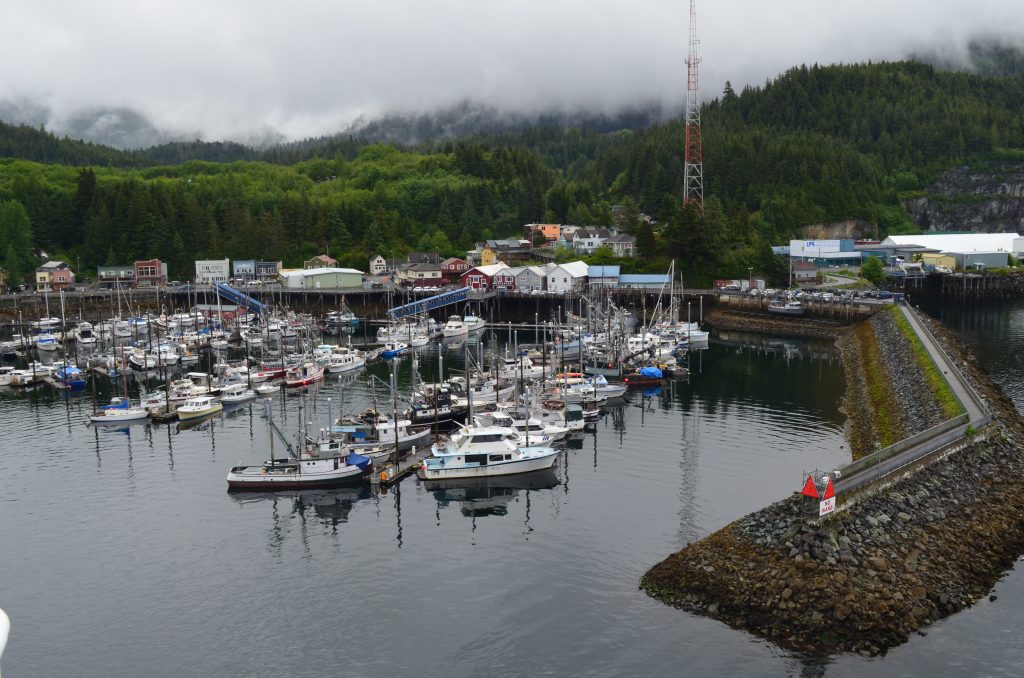
At the end of Thomas Street lies multitudes of boats. In the 1930s, the government converted the low area into the Thomas Basin providing boat owners places to keep their boats year-round. Although considered the “wrong side of the creek” by Ketchikan’s standards, the Stedman-Thomas National Historic District provided a busy community that supported both Ketchikan’s fishing and boating economies.
Totem Heritage Center
Since Thing 2 and I didn’t visit Totem Bight, we toured the Totem Heritage Center near the City Park instead. This turned out better because we saw original totem poles from the 1800s instead of replicas.
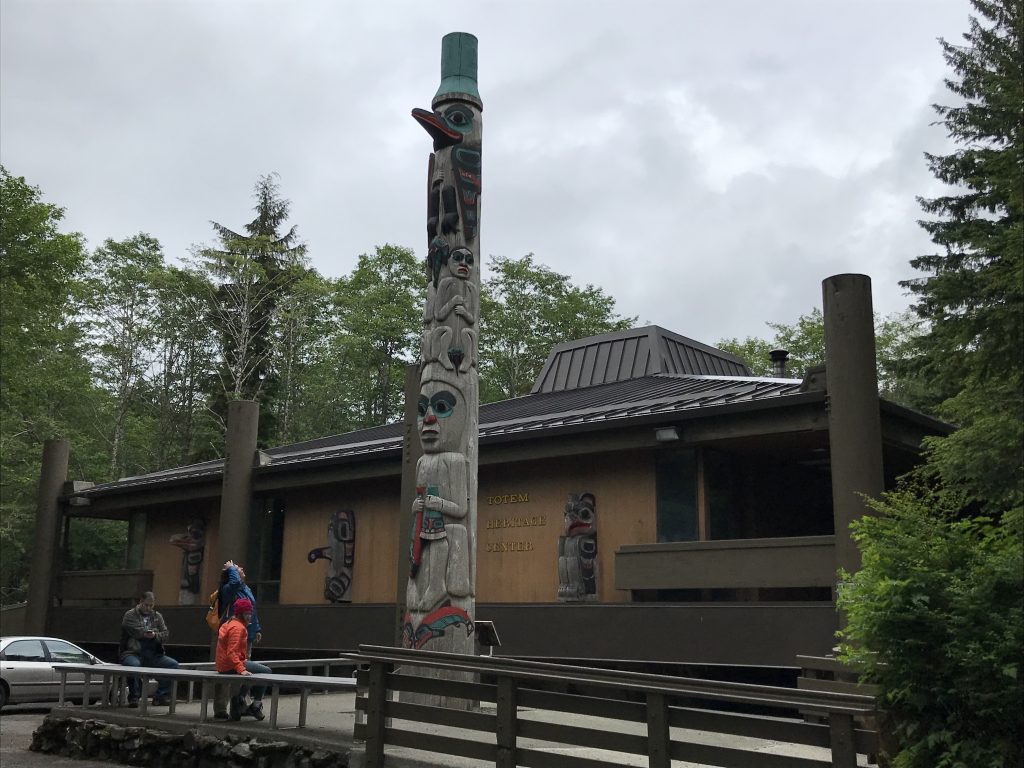
Inside the small building, we entered a room with weathered, unpainted totem poles. Just looking at them, I knew they were old.

As mentioned before, the CCC replicated many totem poles in the area. But what about the originals? Instead of leaving them to deteriorate further, preservationists moved them to the Heritage Center, built in 1976.
n another room, totems lie horizontally in glass cases to protect them from further decay. Historic pictures on the walls show the totem poles in their original locations, as well as information about how the CCC hired local artisans to replicate the poles. I learned it takes over 100 men to raise a totem pole.
The last room at the museum displays Native American art including masks, ceremonial robes and sculptures.
In Conclusion
If you have time to just visit one place in Alaska’s Inside Passage, I highly recommend Ketchikan. It offers plenty to do and is very easy to get around.
